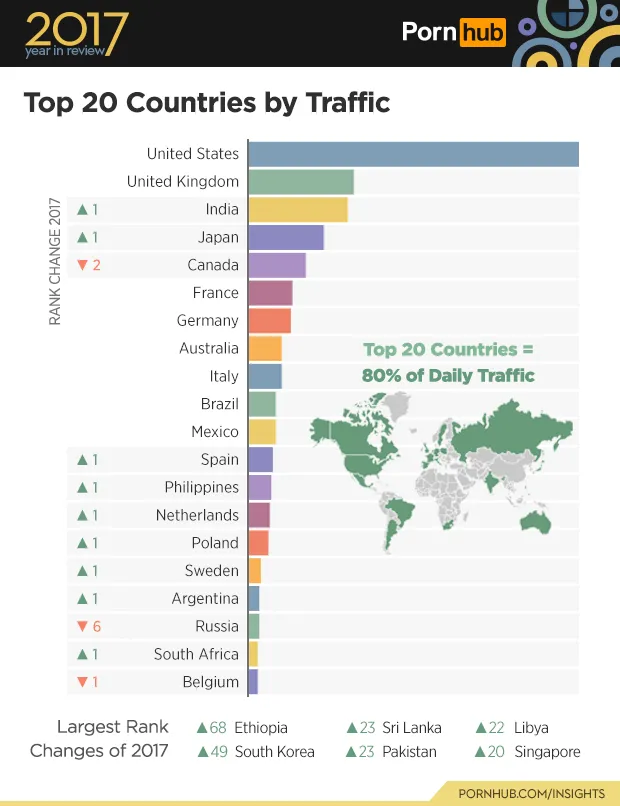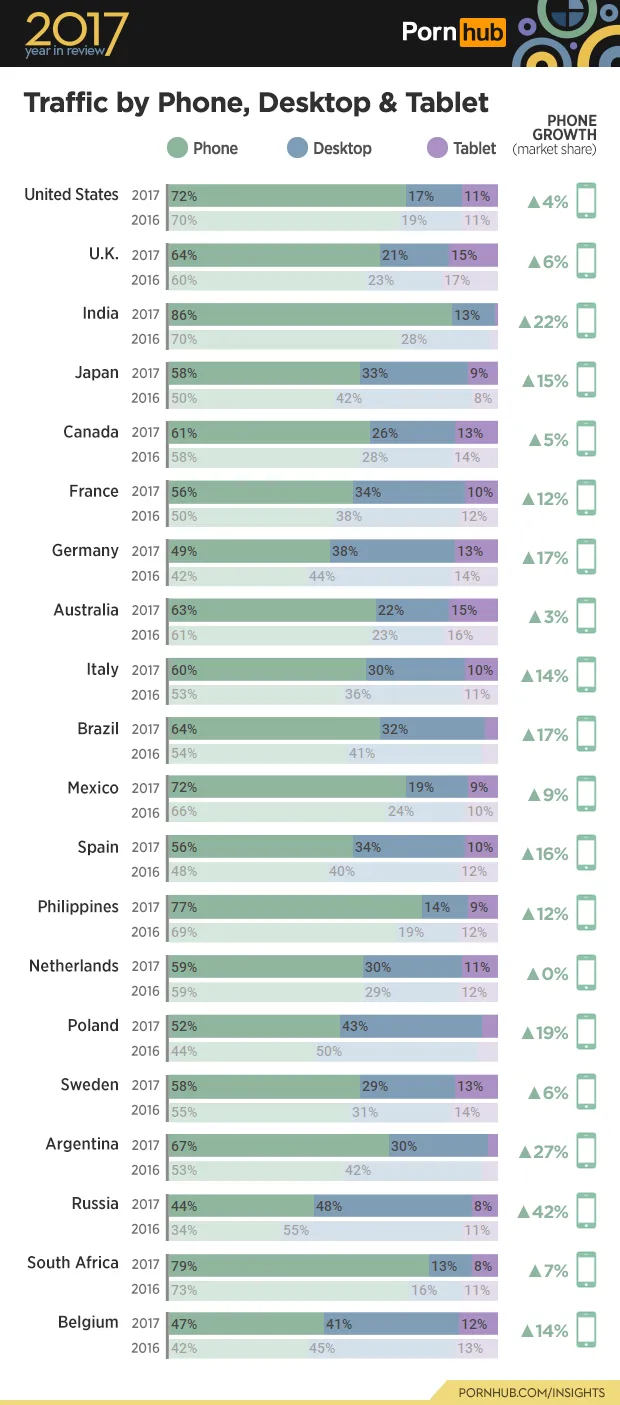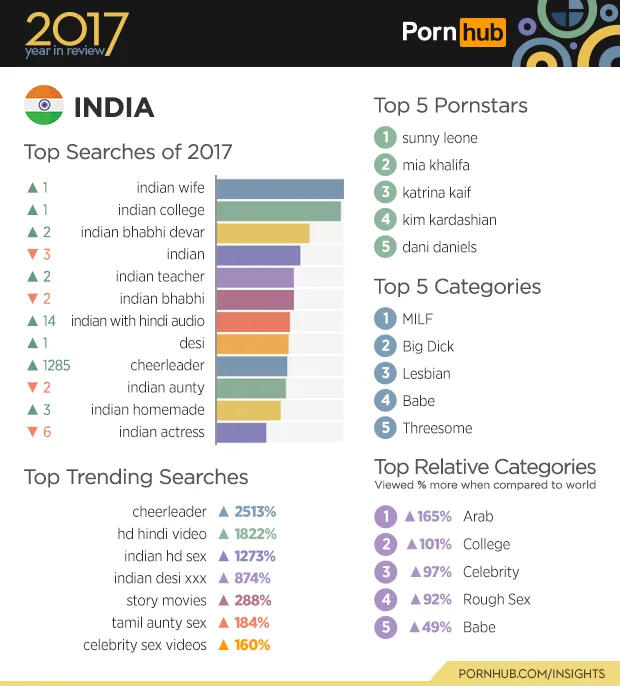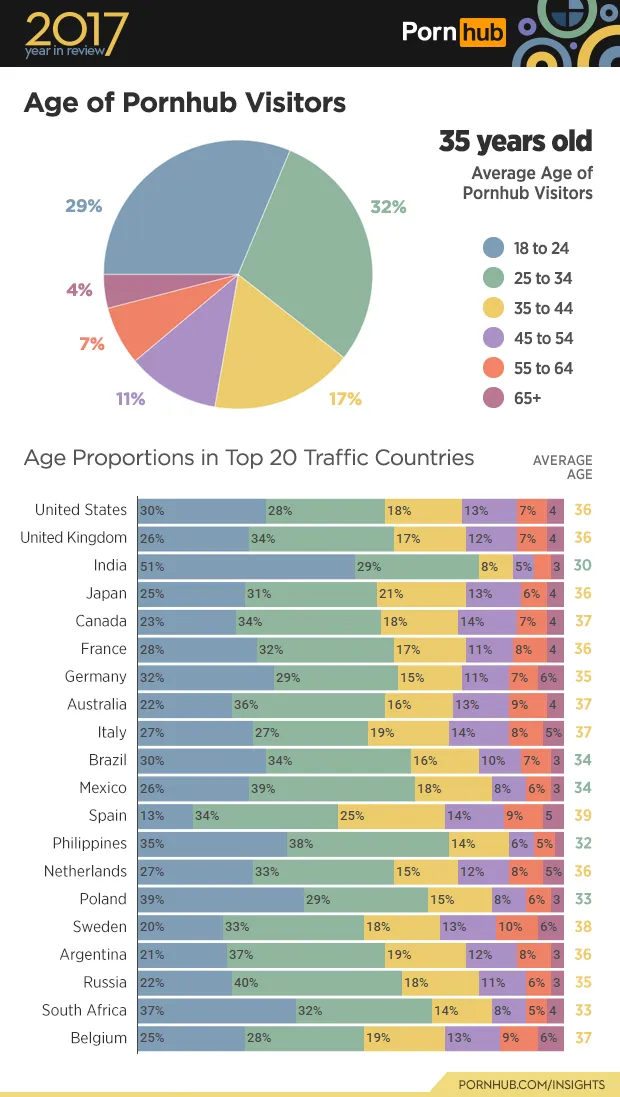India attempts to curb porn – is it working and what it means for Reliance Jio and other telcos
Indians are taking various routes to bypass the porn ban - VPNs, proxy servers, alternative browsers, and more. There is no law against porn yet.
‘If data is the new oil’, then porn is the internet’s fuel.
India accounts for the world’s third-largest consumer base at PornHub - the site our government wants to ban (only the US and the UK, both mature internet markets, are ahead of us). In fact, between 2013 and 2017, India’s porn traffic recorded the highest growth globally. At 121 percent, we were ahead of Japan, Canada, the US, and UK, according to PornHub data.
PornHub attributes this to the availability of “inexpensive and unlimited cellular plans” which not only led to a porn boom, but also resulted in a viewing shift from laptops and desktops to mobiles. Sample this: In 2013, around 39 percent of PornHub’s India traffic came from mobile. In 2017, it grew to an overwhelming 86 percent.
Clearly, most of it was Reliance Jio’s doing. Jio ushered in a new era of mobile internet in India, and led to a surge in not only porn consumption, but overall cross-category video viewing.

In a year-and-a -half of Jio’s existence, porn traffic grew a massive 75 percent, and watch time spiked 60 percent, according to industry estimates. As much as 80 percent of porn viewers in India are in the 18-34 age group, according to PornHub. Most of this was recorded from Tier II and Tier III cities, where dropping data prices and rising availability of low-cost smartphones spurred demand.
But things might change now, at least on the surface.
Ban, and the silence of the telcos
The Indian government wants to ban adult content on the web. The Uttarakhand High Court late September mandated the Department of Telecom (DoT) to issue a ban on 827 adult content websites following the alleged rape of a minor in a Dehradun boarding school.
On October 25, Reliance Jio, the country’s fastest-growing cellular network, followed DoT’s order and was the first ISP to block porn sites including PornHub and XVideos, among others, leading to mass outrage from users on social media and Reddit forums. Other telcos - Airtel, Idea, BSNL – soon followed suit.
The moot question here is: As paying telco subscribers, shouldn’t users have access to the site / app / content of their choice? Also, doesn’t a ban on specific content - adult sites in this case - violate principles of net neutrality?
The jury is still out on this.
When YourStory reached out to Reliance Jio for a comment on the porn ban, the telco declined to speak. We even asked Jio if and how the ban would affect 4G data usage on its network. “No official comment,” a spokesperson told us.
Other telcos haven’t issued any statements on this either.
The pressing question is: Will a porn ban result in a fall in overall mobile data usage in which India tops the world? More importantly, how will it impact telco revenues?

‘Jio impact’ on mobile (and porn) traffic
Before Jio’s launch in September 2016, the average monthly consumption of mobile data in India was about 600 MB. By mid-2017, it surged to 3.5 GB, which is nearly a 500 percent increase. In fact, Jio rival Idea Cellular put on record last year that it expects average monthly mobile data consumption to reach 15 GB in the next few years.
Meanwhile, in its September quarter results, Jio parent Reliance Industries revealed that video consumption continued to drive usage on its network with the average user watching 17.5 hours of online videos a month. Jio currently has 250 million subscribers.
While there is no explicit data on the share of porn traffic on Jio, all it takes is an educated guess to know what kind of videos are most watched. Also, India is merely mimicking a global trend where more than 30 percent of all internet traffic is porn. That is what makes PornHub the 36th most popular website in the world.
A ban on adult websites may not augur well for Jio, or for India’s overall mobile internet ecosystem. It could even result in a loss of revenues in a sector that is already debt-ridden.

Impending revenue loss
It is estimated that 35-40 percent of telco revenues come from traffic on porn websites. That will obviously take a hit. There are precedents too.
Back in 2015, when the government first attempted to ban porn, an industry body spokesperson said close to 70 percent of “total browsing” on the Indian internet was related to pornography. Hence, a ban on any such content would have an adverse impact on industry revenues.
But Indians seem to have discovered VPNs, and other alternative methods to bypass the ban. And why not?
How to still watch porn
India has no law against porn. Not yet.
Hence, watching porn is not an unlawful activity (unless it is related to child pornography or abuse), something reiterated by PornHub VP Corey Price in the wake of the recent ban.
He said in a statement,
“There are no laws against pornography in India and watching adult content privately… For the government to ban sites like ours that have compliant parental controls, a non-consensual take down page, and strict terms of service, is a disservice to the people of India, who have become one of the largest connoisseurs of adult content.”

Porn watchers have now come up with their own jugaad, with a little help from porn sites themselves.
PornHub was prompt in rolling out a “mirror site” PornHub.net in India. “To provide our Indian users with Pornhub content again as quickly as possible, we have set up a mirror site. We understand this has been a hard time for our fans and hope this will provide them with an outlet to help alleviate some of their stress,” it said in a statement.
VPNs or virtual private networks are thus gaining ground. Through VPNs, users can anonymously access content on any website and not have their browsing history tracked. PornHub itself launched its own VPN network, VPNHub, in July.
Google Trends data shows VPN searches from India have doubled in the October 27-to-November 3 week.
Then there are alternative browsers like UC, which still offer access to all 827 porn sites, as reported by Twitter users. Many are circumventing the ban with the help of different DNS servers or proxy servers, or simply by getting into the Dark Web through a Tor browser.
After all, where there is a will, there is a way. Or many ways!







